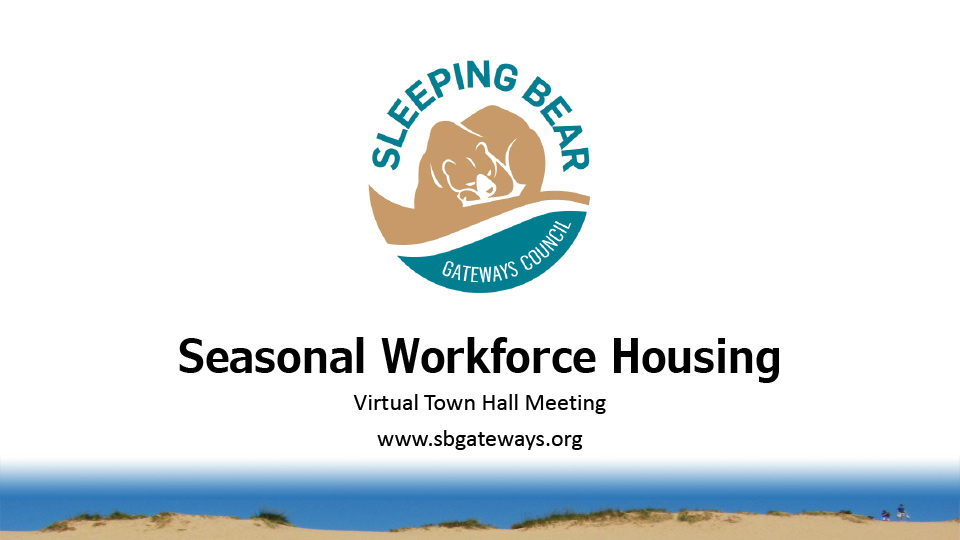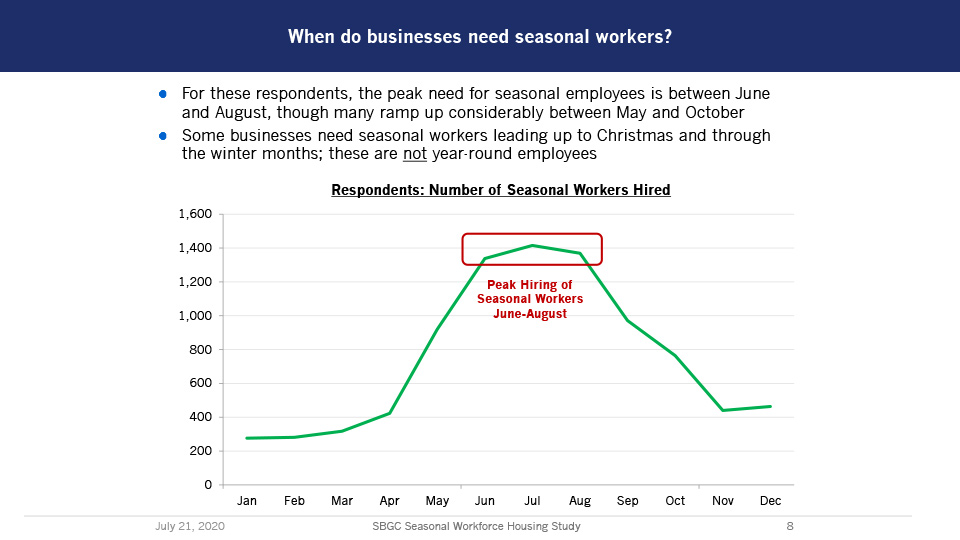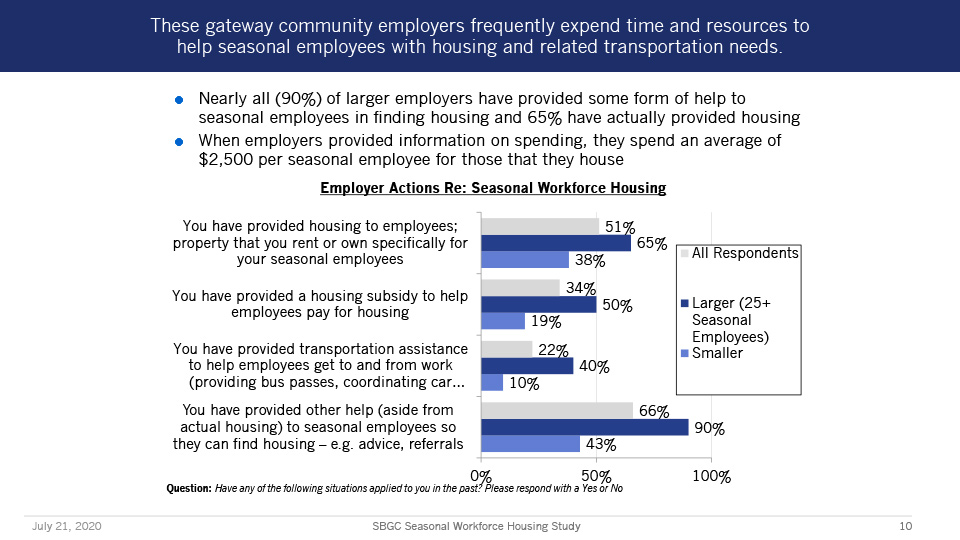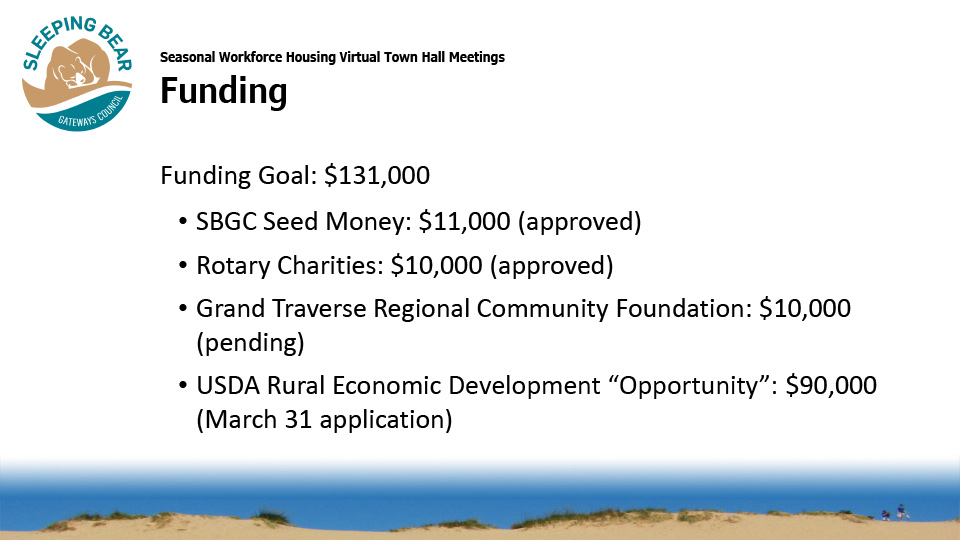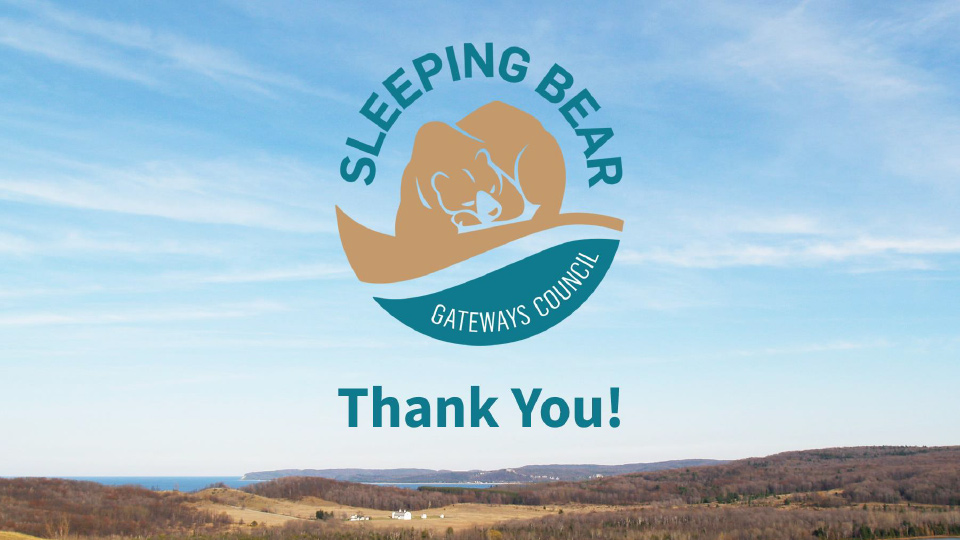The Sleeping Bear Gateways Council initiates projects designed to address current and future impacts on businesses, residents, and the environment from the significant increase in visitors to the Sleeping Bear Dunes National Lakeshore. In 2020, park attendance set a record of over 1.7 million visitors to the area, an increase of over 27% over the last ten years. The areas most impacted by this growth are the “gateway community” villages and townships of southern Leelanau and northern Benzie Counties in northwest Michigan with proximity to the park.
 Based on discussions with local businesses, the increase in visitors to the area in the last decade has led to a consistent shortage of seasonal workers, in part due to the lack of sufficient seasonal housing. As a result, the Council initiated a project to better understand the scope of seasonal workforce housing needs (Phase I) and opportunities to mitigate this challenge in gateway communities (Phase II).
Based on discussions with local businesses, the increase in visitors to the area in the last decade has led to a consistent shortage of seasonal workers, in part due to the lack of sufficient seasonal housing. As a result, the Council initiated a project to better understand the scope of seasonal workforce housing needs (Phase I) and opportunities to mitigate this challenge in gateway communities (Phase II).
In early 2020, the Council contracted with Avenue ISR to survey the business community and develop a reasonable estimate of the number of seasonal beds/accommodations required across the gateway communities. The survey indicated that almost half of both small and large employers could not fill open positions due to the lack of seasonal housing. The study concluded that “the lack of seasonal housing causes negative impacts on businesses and on the customer experience for visitors and other customers, including local residents.” This is a particular problem for our two rural counties whose economies are largely dependent on tourism.
After completion, and in response to the survey results, the Council expanded Phase I of its seasonal workforce housing project by developing a housing exchange on the SBgateways.org website replicating an effort by Sleeping Bear Dunes National Lakeshore in Leelanau and Benzie Counties to solicit offers of accommodation from residents and other landowners in the gateway communities. In Phase II of the project, the Council is organizing a task force of stakeholders and local work groups from gateway communities to assess the feasibility of various solutions to seasonal workforce housing needs. In July 2021, the Council secured the necessary funding from local, regional and federal sources to contract with a project manager that would coordinate this phase II of the project for two years beginning in the fall of 2021.

